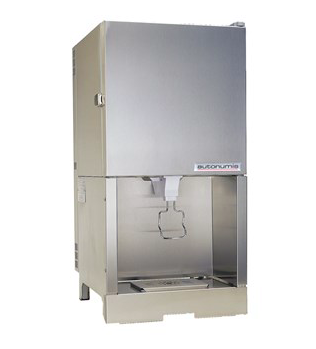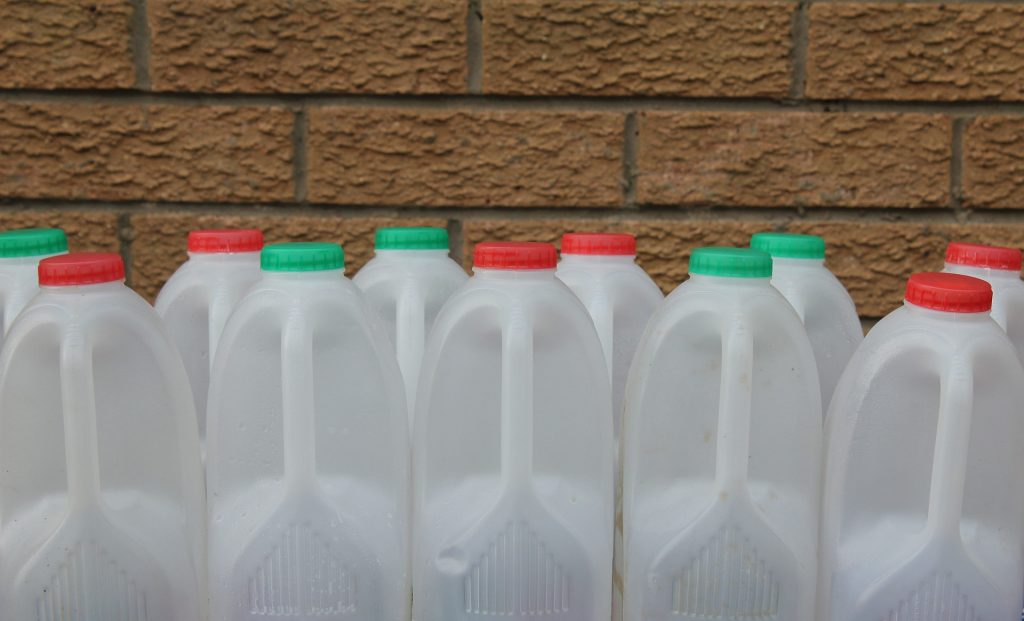A recent surge in mainstream awareness over plastic pollution has resulted in an increased focus on the use of plastic milk bottles which has driven an increase in the use of glass drink and glass milk bottles. Even large companies such as Coca-cola have confirmed those statistics by revealing that it has enjoyed a 14%. read more.
Glass milk bottles used to be the norm, however the rise in cheap milk from the supermarkets in the 1980’s and 90’s drove the demise of the milk deliveries to the home and offices and with it the increase of plastic milk bottles.
Whilst many office milk customers are shifting to the use of glass bottles the arguments for and against the use of glass are not straight forward.

The Case for Plastic Milk Bottle Office Deliveries
Plastic milk bottles are generally made from a type of plastic called high-density polyethene (HDPE) and are widely recycled. The challenges with these plastic bottles is when the bottles are not recycled in a responsible manner and end up either in landfill, or worse into the ocean where they can biodegrade into highly damaging microplastics that can disrupt ecosystems and infiltrate food chains. The impact of which is not fully understood. In addition the recycling of such plastics typically involves down cycling them, they are often un-suitable to be used as food packing.
Plastic milk bottles do not decompose but in time do photo degrade however this process depends on conditions and can take up to 100 years read more. In addition they can often only be re-cycled 7 to 9 times.
The Dairy Roadmap has set targets for the use of rHDPE in new milk bottles of 10% by 2010 (achieved), 30% by 2015 and 50% by 2020.
Every day in the UK nearly 36 million plastic bottles are consumed ( not just milk ), unfortunately only around 20 million are recycled each day. This results in circa 16 million plastic bottles a day not making their way into the recycling bin. read more
Glass Milk Bottle Delivery Benefits
Glass milk bottles are typically used on a rinse and return basis. The dairy sterilise refills and, recaps the milk ready for delivery again. Delivery in glass bottles can be more expensive than plastic – they simply cost more.
Plastic bottles can contain chemicals that may change the chemical makeup of a product if the contents are left in it for too long or they are exposed to temperature that are extreme. Glass however is a much better containment vessel as it does not share these properties. Glass also keeps milk colder. Colder milk, means a creamier and richer taste.
The Carbon Footprint of Milk Delivery
Up to 80% of recycled glass can be reclaimed, and recycled glass uses 40% less energy than manufacturing new glass. The carbon footprint benefit of glass however is only arguably beneficial if the bottle is re-used. A glass bottle must be re-used at least 3 times to match the carbon footprint of a plastic milk bottle. If the plastic bottle gets recycled, however, then the glass bottle must be reused 20 times to make their carbon footprint comparable. read more.
While glass milk bottles have become lighter over the years, some 40% lighter than they were 20 years ago. read more. The weight of a glass bottle is significantly heavier than a plastic one. It is therefore very costly, both financially and in terms of carbon emissions to transport.
Plastic bottles are also typically efficient to transport, not simply because of the weight benefit but also because of the design. Today’s plastic milk bottles are design to maximise the amount you can transport. Today they are much squarer with shorter necks meaning more bottles can be fitted onto one vehicle that the glass competitor.
Possibly the most environmentally friendly way to have your milk delivered is a Chilled Milk Dispnser
A milk pergel, milk dispenser or milk cooler is the ideal way to cut down on the carbon footprint of your office milk delivery whilst saving valuable space in your office fridge. These units typically accept 3 Gallon, or 24 Pint re-fills. The re-fills are plastic bags inside a cardboard box. Due to the large capacity the number of trips and space efficiency on the delivery make these arguably the better solution. In addition the often deliver costs savings to the larger office milk user.

How to recycle your plastic milk bottles
Most councils will accept these as part of your recycling. You should squeeze the air out of he milk bottles and leave the tops on your milk bottles when you recycle them.

